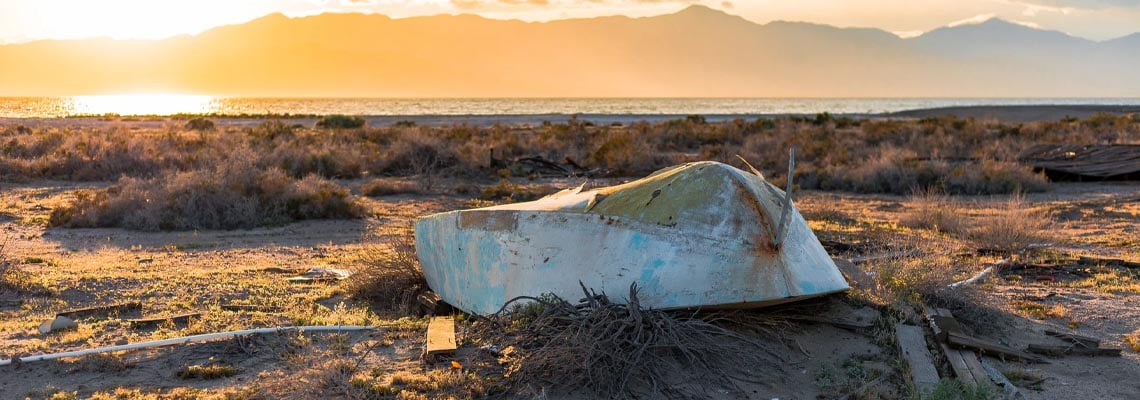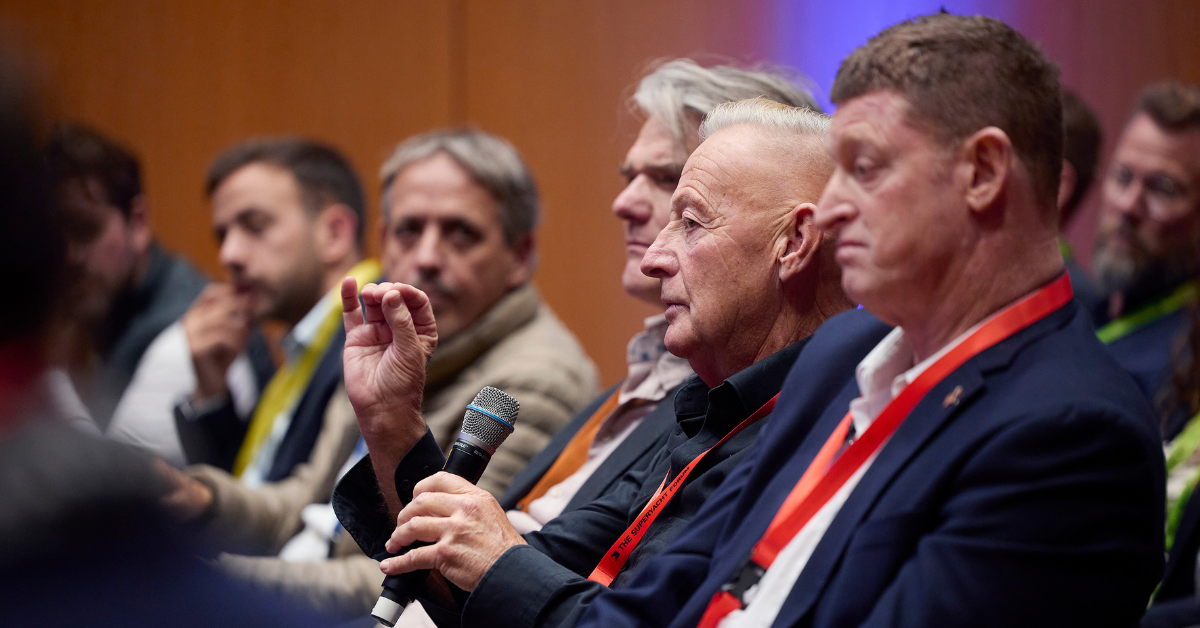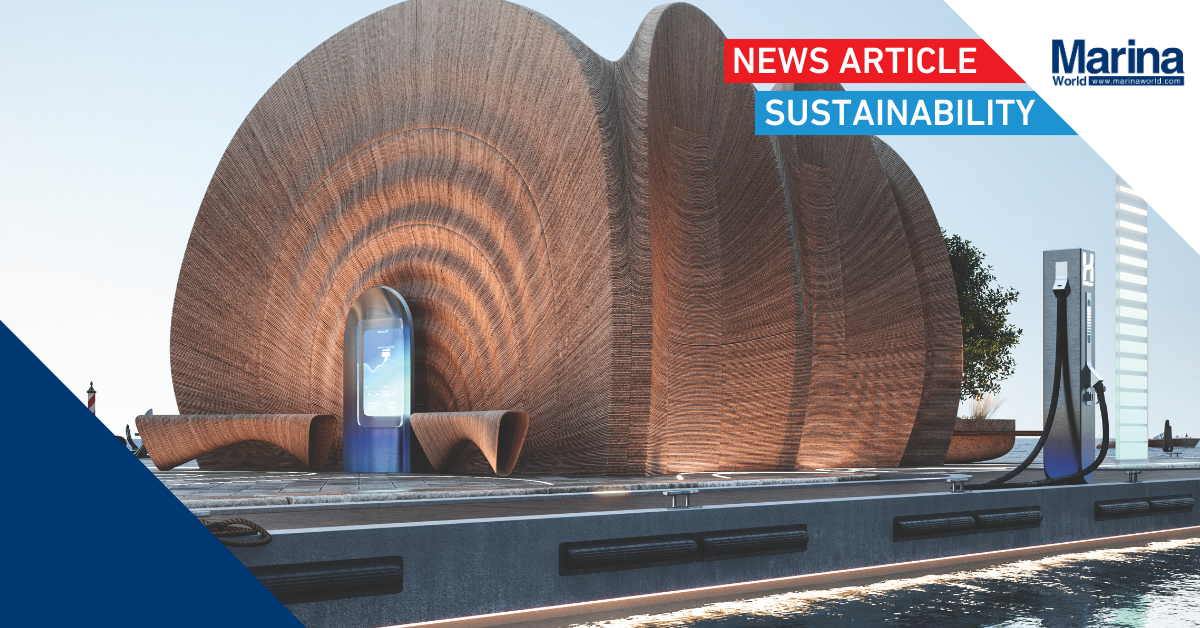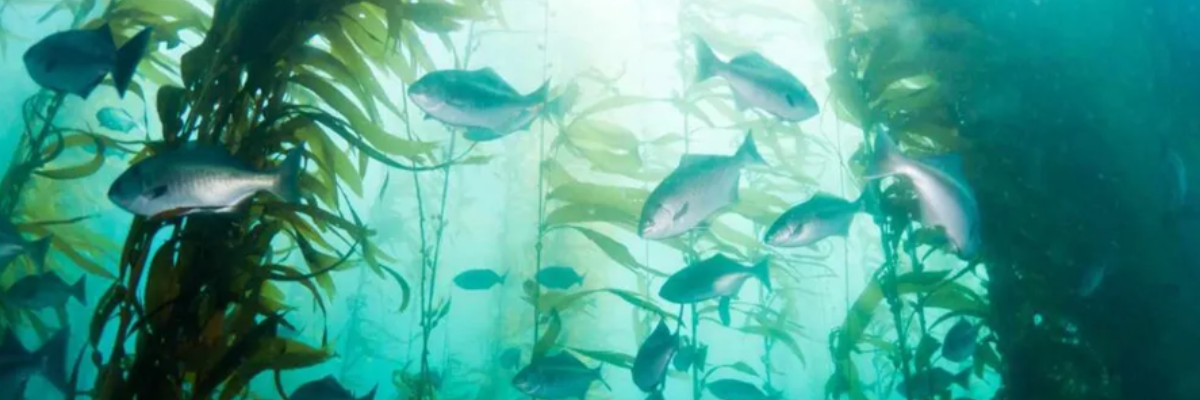The disposal of End-of-Use boats - Sustainability Panel Review
At METSTRADE we have been organising forums around the subject of end-of-life, or end-of-use boats for six years now and have regularly engaged stakeholders from across the industry. The very first conference on Yacht Recycling was held back in 2015. I remember it was quite a depressing day, because most of the content focused on the scale and scope of the problem, with just a few scant ideas and outline plans to do something, but without any really tangible or workable solutions on the table.
This article is a summary of the 2020 virtual panel on end-of-life (or end-of-use) boats. Watch the full Sustainability Panel Session (40 min)
What has kept us going and given us encouragement, is that every year when we meet again in Amsterdam, we see more positive signs. More local actions, more ways to upcycle or re-use waste glass fibre composites, a few successful boat breaking businesses, and more recently some funding becoming available, either from government sources, or from within our own industry.
Sustainability panel on the disposal and recycling of boats
Once again, during the 2020 METSTRADE Connect virtual show, we invited a panel of experts to bring us an update and practical discussion around the subject of end-of-use boats. The session was moderated by Albert Willemsen, the Environmental Consultant for ICOMIA and the speakers were as follows: Dr Corina Ciocan, University of Brighton in UK, Steve Frankland, Managing Director of BoatBreakers UK, Dr. Mario Malinconico, of International Council for polymer sciences in Italy, Evan Ridley from Rhode Island Marine Trades Association in USA, and Phil Horton, who is Environment Secretary with the European Boating Association.
Acting on waste from end-of-use boats before legislators do
During his introduction, Albert pointed out that avoiding prohibitive legislation and being pro-active within our own industry was the most important thing to consider. Also, that more emphasis on design for disassembly, and adoption of more eco-friendly materials was crucial, in order to turn the tide in the battle against environmentally damaging waste from end-of-use boats.
Impact of boat disposal on oceans and waterways
The first speaker was Dr. Corina Ciocan a marine biologist, who said she had discovered the damaging effects on the marine environment from end-of-life GRP boats as part of her research projects, and almost by coincidence, due to her location on the English south coast, close to a lot of leisure marine and yard activity.
Corina said that she had observed two clearly defined components to the problem of boat disposal. One being the impact of abandoned boats, and their effect on pollution of the marine habitat in estuaries, coastal zones and even coral reefs, seagrasses and mangroves etc.
GRP as a dust: a fine micro-plastic
The second and probably more damaging effect, is that of GRP as a dust, this in particular when the material is cut and sectioned during the disposal process. She commented on what she had discovered as the inevitable fate of this polluting dust, basically a fine micro-plastic, when it quickly reaches the marine environment.
Corina’s studies have shown, that firstly, the fine dust from the polyester resin tends to float, thus adding to the general level of plastic pollution in the oceans. And then the glass strand element, being heavier, will become sediment and settle on the sea floor, where it is likely to be ingested by marine creatures and various organisms.
Closed loop disposal of redundant composites
Evan Ridley. who is project managing the end-of-use boats disposal scheme for the Rhode Island Marine Trades Association in the USA, has been a frequent visitor, and cooperating colleague with METSTRADE for the last five years. During this time, he has willingly exchanged information on the progress of their trials, which have so far, been aimed at responsibly disposing of tons of composite waste via the cement kiln closed loop method. I.e. Waste materials end up as a sintered dust in the cement mix as a consequence of ultra-high temperature incineration.
Built up of redundant GRP
Evan emphasised that in the longer term he is very much supportive of seeing composite materials developed, that can be separated economically and efficiently at end-of-life and put back into boat construction. But meanwhile, the huge volumes of redundant GRP building up in the USA, which cannot be practically separated and reused, have to be dealt with via a process that is set up to handle such quantities. He pointed out that these volumes have been significantly added to by the wind turbine industry, as it has been investing in re-powering with a new generation of composite turbine blades, thus creating a massive waste stream of older generation turbine blades.
As to the future, Evan sees a patchwork of solutions developing internationally so that depending on volumes, economics, regional trends, and evolving technologies (such as composite reuse / up-cycling,) there will eventually be more on offer than a ‘one size fits all’ solution.
Who pays? The continuing challenge with old boats
Steve Frankland’s company, Boatbreakers, are the largest disposer of recreational yachts in the UK and have been carrying out their service for 15 years. Not surprisingly, Steve has very clear ideas on what the challenges are, when it comes to getting rid of old boats without damaging the environment.
His opening comment very clearly confirmed one of the main issues that has come up every year at METSTRADE, “breaking boats is not the most challenging problem, but getting people to pay for it is the biggest barrier to progress.”
Lack of registration
As we have said previously, the first GRP boat was manufactured in the USA back in 1953. So for nearly 7 decades the marine leisure industry has been turning out millions of composite boats, with no real solutions for dealing with the materials at the end-of-life.
Lack of registration in many countries, particularly in the UK, is also a problem, which means no owner traceability. Steve mentioned how old boats can be auctioned online for next to nothing, and then abandoned soon after, as the new ‘owner’ has no resources or willingness to keep them. Then the local authority, or the unfortunate owner of the land where the boat was abandoned has to pay for the disposal, and not the person who dumped it.
Solutions for funding the disposal of boats
Due to difficulties in disposing of GRP composites in large volumes, Steve admits that the boats have to be cut into small sections and then sent to landfill, a situation that he is not happy with.
In order to address the problem of funding for the future, he suggests two possibilities. First, for boatbuilders to add a levy to the price of a new yacht, which is accrued in a central fund towards eventual disposal costs. Second, Boat insurers to add a similar levy to the annual premium, which can be accrued and paid out to boat breakers in the same way when the boat reaches end-of-life.
Composite upcycling without separation
Mario Malinconico a research academic in polymer sciences has spoken previously at the METSTRADE sustainability forums. He emphasised that the composite upcycling project which he introduced in cooperation the Italian Marine Association several years ago, is still very much ongoing, despite the difficulties caused by the Pandemic.
Their concept is based on the theory of not trying to separate the resin from the glass fibre. But rather to encapsulate the whole material in its granular form, into a newly formed ‘micro envelope’ which preferably should not become another thermosetting material. This way, by converting it to a thermoplastic matrix, it avoids the upcyled material from presenting the same problems of non-recyclability at the end-of-life.
The other components in this matrix have to come from preferably, another high-volume stream of waste material. And according to Mario, the most suitable source for this, is from packaging in the shape of expanded polystyrene. This combination has enabled a mixture of thermosetting granules (from old boats / wind turbine blades etc) to be incorporated into a homogeneous matrix, which then forms a thermoplastic sheet material. This can then be used in applications such as furniture, lamps flooring, and kitchen tops etc.
Mario argues that separating materials from disassembled boats is not a very practical proposition, with sealants, adhesives, and all types of sandwich constructions making this a very time consuming and uneconomical task.
End-of-life responsibility should start at the beginning
Phil Horton works as Sustainability Manager for the UK’s Royal Yachting Association, in addition to his role as Environment Secretary with European Boating Association (EBA). So he is another man with clear views, on what needs to be done to make our industry more responsible, when it comes to disposing of old boats.
Extended Producer Responsibility
Phil mentioned that European Boating Association is supportive of the EPR (Extended Producer Responsibility) model, where the original boat builder would accrue some money from the original sale which would then be available for eventual disposal costs. Even though this cannot be retrospectively applied to older boats, it could still be used from a central fund towards the disposal of the heritage fleet. (A similar scheme has already been established in France.)
Referring to the information that Corina had given about micro plastic particles entering the marine environment, Phil said, that more awareness and education is required about the effects of dust creating maintenance work on recreational vessels over their entire life cycle.
Regarding the likelihood of industry level legislation coming to pass on such matters, Phil stated that ongoing meetings as part of the DG Mare - EU Commission project were continuing to discuss how Extended Producer Responsibility can be introduced in Europe. This is a concept that is supported by organisations such as ICOMIA and European Boating Industry.
And although boating represents only about 5% of the total composites waste stream, he said that there is a real need for us to work in harmony with the wider composites industry, on finding environmentally acceptable end-of-life solutions.
More action required at grass roots level
In his summing up, Albert Willemsen said that after six years of such forums at METSTRADE, and with a background of some solid progress, the yachting industry now needs to put together a team that can oversee tangible actions, and to put some ideas and concepts into real everyday practice.
Let’s hope that we hear more encouraging news about this the upcoming METSTRADE.
Update May 6th, 2021: Since this article has been written, news has come from Brussels that European Boating Industry, and European Composite Industry Associations have partnered up, in order to explore ways to better address the problem of composite waste streams coming from old boats.
fShare your stories on leisure marine industry with us
Do you have an innovation, research results or an other interesting topic you would like to share with the leisure marine equipment industry? The METSTRADE website and social media channels are a great platform to showcase your stories! Let us know via metstrade@rai.nl
Are you a METSTRADE exhibitor?
Make sure you add your latest press releases to your Company Profile in the Exhibitor Portal for free exposure.





.jpg?h=400&iar=0&w=1200)
